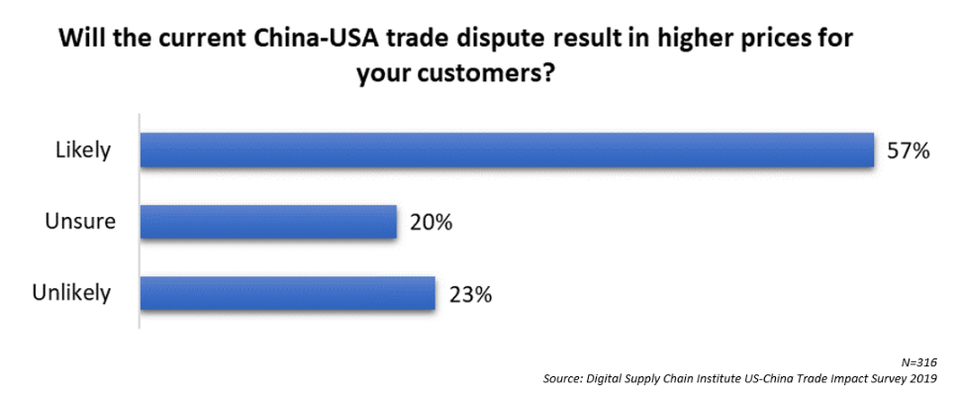Nine Features Your Supply Chain Must Have To Woo (And Wow) The New Customer
Your supply chain is no longer adequate. It’s not broken, and it’s not that the supply chain was poorly designed. It is simply that the expectations of your customers have dramatically changed and your supply chain hasn’t kept pace. You’re zeroed in on the old way of doing things that built your customer base when it’s the demanding New Customer that you must now woo (and wow) to grow that base.
The New Customer wants something different, something that the supply chains companies have worked so hard to build cannot provide. This New Customer is present in both the consumer and business markets. Companies that build a Digital Supply Chain to meet the needs and desires of the New Customer will have the advantage. But execution is hard because you must change the mindset of supply chain leaders that made their company successful by moving production to China, standardizing products and parts, improving forecast accuracy and managing the backside of the business.
The New Customer has more expansive expectations and requirements that could not have been imagined even five years ago. Here are the key elements:
Simultaneous fulfillment of demand and delivery. The New Customer expects that whatever they want will be delivered nearly instantaneously. We have been trained by Amazon to expect that delivery takes no more than two days—max. And this expectation of instant satisfaction is only getting more acute. What do you think will happen when CVS delivers “drugs by drone” to your home with no lag time? This is not just a consumer phenomenon: B2B companies expect the same treatment. While this demand seems extreme and potentially expensive, the value is not only to the New Customer. Companies can expect to move products and services faster and collect payment much quicker.
Bespoke products and services. The New Customer wants something unique to them and their business. Henry Ford’s motto (“Any color as long as it is black.”) made sense back in the day. But now people want things made to fulfill their needs. Under Armour, for example, lets customers design their athletic shoes. This is contrary to everything we know about supply chain efficiency.
Public review by anyone on everything. The New Customer expects that they will have full access to reviews by their peers. There will be no more secrets and smart marketing will no longer overshadow mediocre reviews. This means that companies must understand what the New Customer likes and be agile enough to deliver.
Price that changes, in a logical way. The New Customer understands that prices should change based on demand. Uber adjusts pricing based on market activity. Southwest manages to price fares in such a way that the passenger seated next to you may have paid half as much, or twice as much considering real-time demand. Dynamic pricing will require a Digital Supply Chain that includes, among other features, world-class data analytics.
Social values that match. The New Customer expects that companies will be able to confirm the origin of all products/services and attest to their being developed and delivered without poor labor conditions or environmentally destructive practices. In many markets, an un-aligned social value proposition will kill a product. Today, most companies are unsure of the conditions of their suppliers and may lack any insight into what Tier 2 or Tier 3 vendors are doing. Some companies like it this way. Big mistake.
Delightful user experience. The New Customer expects that the user experience will be delightful and rich. Companies like Dell understand the role of the supply chain in making this possible. Whether you are buying a server, storage or PCs, the end user (and distributors) make the process straightforward. The New Customer expects that the supply chain will deliver a joyful, not painful, experience.
It takes a community. The New Customer expects that “like-minded people” will enjoy the same product or service. These people will post about how they are using what you deliver. The New Customer expects a community. How many traditional supply chain leaders are working to create this community?
Privacy is protected. The New Customer does not like it when their data is shared. This is true for companies and individuals. Recent legislation, especially GDPR in Europe, demand the “right to be forgotten.” This movement is gaining momentum.
Sharing is okay when it’s relevant. Everyone expects that they will be offered experiences, products, and services that meet their needs. My time is wasted if I receive an offer on hair care products, but I am delighted when I receive an offer about Ducati motorcycles. Companies are no different. They don’t want to see products and services that are not suitable for their industry.
While I have covered many dimensions of the New Customer, it is important to understand that the future will rely on a new generation of Digital Supply Chains that meet the needs of the New Customer. To get there, companies have to bring people with deep analytical skills into leadership to institute the technical and cultural changes required to transform the supply chain.
This will not be easy. The hard part will be changing the mindset of supply chain leaders. But companies must understand that the New Customer requires features that fall to supply chain leaders to deliver. Companies need a new approach to enterprise supply chain management that focuses on the customer and maximizes demand. That is, they need to do what I call a Frontside Flip. In other words, flip the focus of the supply chain to the customer-facing side — the frontside — of the business. Do it now before the New Customer takes their business to your competitor.

